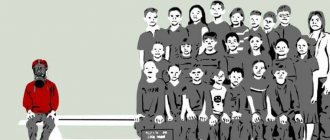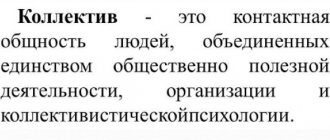Frustration is a well-known feeling of dissatisfaction when it is impossible to achieve a goal or satisfy an urgent need. This is an emotional state, manifested by several emotions at once: from anger and rage to sadness and anxiety, guilt, frustration. The main danger of a state of frustration is destructive behavior (withdrawal from reality, bad habits and addictions, antisocial behavior).
What is frustration
Literally, frustration is translated as “deception, false expectation.” This is a negative state caused by the inability to satisfy current needs. A person’s experience and behavior are determined and caused by difficulties that he cannot overcome on the way to a goal or in the process of solving problems.
Manifestations of frustration are individual in nature. Some of the most popular reactions include:
- disappointment,
- resentment,
- annoyance,
- irritation,
- indignation,
- despair.
Situations that cause a state of frustration are called frustrating. Obstacles that make it difficult to achieve a goal and cause a state of frustration are called frustrators or frustrating influences. The effect that a person experiences when trying to adapt to frustrating conditions is usually called frustration tension. The higher the tension, the more strongly the functions of the neurohumoral system are activated. Thus, the greater the stress (it is difficult for a person to adapt), the greater the power of the body’s psychophysiological reserves. He is gradually depleted.
Definition
The word corresponds to the concepts of “disappointment” and “dissatisfaction”, but reveals their deeper characteristics.
Frustration in psychology is:
- feelings of sadness or irritation due to an inability to achieve a goal or change a situation;
- impeding progress, success or plans;
- a chronic state of vulnerability or dissatisfaction that is caused by failure to achieve set goals;
- negative behavior that occurs when motivational impulses are blocked;
- inability to complete a behavioral process due to the lack of the desired stimulus (the presence of a marriage partner) or the presence of physical barriers.
In all cases, frustration is accompanied by stress. The severity of the condition depends on the individual characteristics of the person and the factors that provoked it.
Theories of frustration
The issue of frustration has not yet been fully studied. I suggest you familiarize yourself with the most popular theories that name the main defensive reaction that accompanies frustration.
Frustration - aggression
D. Dollard's theory. According to the author, if a person shows aggression, then one can assume that he is frustrated. The stronger the desire for an unattainable goal, the stronger the aggression. Frustration is stronger the more often it is repeated and the lower the tolerance to it.
Frustration - regression
Theory by K. Lewin, R. Barker and T. Dembo. The main defense mechanism is regression, that is, the personality reproduces previously learned patterns of behavior (rollback to previous age periods). Often this mechanism is combined with others.
Frustration - fixation
N. Mayer's theory. Human activity loses its purpose. Behavior becomes aimless and repetitive. That is, a person fixes attention on something narrow and not related to the goal, fixates on things not related to frustration.
Causes of frustration
The state of frustration is caused by obstacles that interfere with the activity necessary to achieve the goal. We are talking about prohibitions, physical and moral obstacles, contradictions. There are obstacles:
- physical (arrest);
- biological (aging, disease);
- psychological (fear, lack of knowledge);
- socio-cultural (norms, taboos of society).
Strong motivation to achieve a goal and significant obstacles along the way are two main conditions for frustration. As a result, a person either activates all his forces and looks for alternative ways to achieve this goal (not always rational, often impulsive), or abandons the goal (achieves it partially or in a perverted way).
The simplest and most common option is addictive (dependent) behavior, but this is the wrong response. Addictive behavior in response to frustration can be a variant of learning (parents set a personal example), compensatory behavior, or inadequate psychological defense.
Frustration factors
Among the negative factors that can cause frustration, it is customary to distinguish between external and internal. External factors include:
- interpersonal conflicts, including those turning into intrapersonal ones (contradiction between personal and social);
- incorrect upbringing conditions or a destructive upbringing style (a harbinger of conflicts based on disharmony of personal and social values and orientations);
- dissatisfaction with oneself in work or other areas (an unsatisfied need for self-actualization caused by a feeling of incomplete disclosure of personal potential or awareness of the wrong path).
Among the internal causes of frustration are various types of internal conflicts:
- Having two desired goals, that is, a person chooses between two positive events. But he cannot achieve them at the same time. Whatever need a person chooses, he will find himself in a gain and in a state of mild frustration at the same time.
- The choice of the least evil, that is, the choice between two negative situations. Such a conflict causes the most severe frustration, because in any case a person will be a loser. Often a person tries to avoid making a decision and escapes reality. When it is impossible to escape, he displays aggression and anger.
- Choice between positive and negative goals. The most common conflict is the so-called struggle between good and evil (the light and dark sides of the soul). Causes moderate frustration.
Further research
One of Williams's studies examined the effects of irritation and frustration in gaming and assessed how these factors relate to trait aggression. His study collected data from 150 men's college students. The study consisted of two phases. The first phase lasted 45 minutes and involved working in a large group. During this phase, participants were asked to complete a series of questionnaires that assessed their gaming habits and aggression. The second phase consisted of a one-on-one session with each participant. During this phase, participants played video games and were assigned to one of four conditions:
- With violent content in low/medium difficulty mode.
- With violent content in constant frustration mode (high difficulty).
- With non-violent content on easy difficulty mode.
- With non-violent content in constant frustration mode, i.e. at a high level of difficulty.
As part of maintaining a maximally frustrating condition, participants were informed that their scores would be compared with other participants and that higher performance would be rewarded with a $100 gift card. Participants then completed a questionnaire similar to the first. Ultimately, this study found that exposure to violent content influenced participants' aggressive responses while playing video games. The psychologist also found that general examples of frustration from gameplay were just as impressive as those from aggressive reactions from other participants. Modern gaming culture is therefore a great opportunity for people to get together, play something and throw out pent-up emotions.
Prerequisites for frustration
Frustration does not occur immediately; it is preceded by several characteristic stages, thanks to which a state of frustration can be suspected and prevented:
- accumulation of dissatisfaction as a result of repeated failures;
- the depth of dissatisfaction (depends on the severity of the need and the frequency of failures);
- emotional excitability as an individual personality trait (the more pronounced, the faster frustration arises);
- level of aspirations and habit of success (for people with high demands and accustomed to success, even a minor obstacle can cause frustration);
- the stage at which the obstacle appeared (if difficulties arise at the very end of the activity, near the goal, then the frustration is stronger).
Diagnostic methods
There are several ways to identify emotional frustration in a person. The short questionnaire was developed by V. Boyko; it contains 12 points, where a point is awarded for each.
Important! If the final result is more than 10 points, then the individual has high frustration, from 5 to 9 - a high risk of development, less than 5 - there is nothing to fear.
A brief diagnosis is offered by L. Wasserman. It contains 20 questions, each answered from “completely satisfied” to “not satisfied.” The answer is scored from 0 to 4 points. The sum is calculated and divided by 20. As a result, if the result is 3.5-4 points, then high frustration, from 3.0-3.4 - average state, 2.5-2.9 - moderate, 2.0- 2.4 is weak, anything below 1.9 should not cause concern.
When diagnosing, it is important to understand that frustration and deprivation are different conditions. They require a different approach to correction. V. Boyko has a more detailed diagnosis, which allows one to determine accumulated emotions.
Prostration and frustration are also different states. With prostration, a person experiences serious nervous exhaustion, while frustration occurs when it is impossible to satisfy one’s desires.
Frustration emotions (structure of frustration)
The emotions that most often accompany frustration are not always appreciated. But it is precisely the manifested emotions that can be considered symptoms, signs indicating the true cause of frustration.
- Resentment. Occurs when a person’s sense of dignity is violated, undeserved (in the opinion of the individual) humiliation. For example, with reproaches, insults, deception, incorrect remarks and accusations. Resentment can be stored in a person’s subconscious for a long time, depleting him. Or force you to consciously develop a plan of revenge, to show aggression.
- Disappointment. Occurs when expectations are not met. This is dissatisfaction and displeasure due to an unfulfilled promised or expected event. The more was promised or the stronger and more desirable the expectation, the greater the person’s disappointment.
- Annoyance. This is regret with a hint of anger, caused by one’s own failure or the failure of friends or a significant group (for example, a football team).
- Anger. Indignation, indignation, anger because of one’s own powerlessness in the face of obstacles that arise along the way.
- Fury. Behavior full of aggression. Rage can be noble (war), constructive (debate), destructive (violence, senseless cruelty).
- Sadness. Loss of something or someone. Feeling of loneliness due to the loss of prospects for achieving a goal or communicating with a person. We are talking about anything personally significant.
- Dejection. It consists of a feeling of hopelessness from the inability to achieve a goal, boredom and sadness, loss of interest in everything that is happening. Dejection is accompanied by awareness of the prospect of an unfavorable outcome of the current process. If the process has already ended and the forecast has been confirmed (the person has failed), then a feeling of hopelessness arises, which is accompanied by other emotions (disappointment, sadness, grief, despair).
Thus, frustration is a reaction to life difficulties that interfere with achieving the desired goal. It is reflected in the emotional, cognitive and behavioral spheres.
Stages of frustration
Frustration manifests itself in several stages. Each of them is characterized by its own characteristics of individual behavior:
- At the first stage, behavior is organized and motivated.
- The person begins to lose self-control. Voluntariness weakens, but does not disappear completely. There is a glimmer of hope that the situation will be resolved. The behavior is motivated, but not purposeful (disorganized).
- At the third stage, the connection between motive and behavior is completely lost. Individual actions are still endowed with a goal, but it is not connected with the first motive (behavior not for something, but as a result of something).
- The fourth stage is characterized by a complete loss of self-control. The person does not even realize the meaninglessness, disorganization and unmotivation of his own behavior.
Reaction to frustration
American psychologist and psychotherapist Saul Rosenzweig identified 3 types of response to frustration:
- Extrapunitive (occurs in 50% of cases). An internal “instigator” awakens in a person, which encourages him to look for those to blame in the outside world (people and circumstances). As a result, the individual has a goal to achieve what he wants at any cost. The emotional background is characterized by stubbornness, anger, aggression, annoyance. Behavior becomes rigid, primitive and previously learned forms of behavior predominate, for example, children's whims.
- Intrapunitive (occurs in 27% of cases). A person is accompanied by a feeling of guilt; he blames himself. This ends with auto-aggression (aggression directed at oneself). The emotional background and behavior are characterized by isolation, anxiety, and silence. A person returns to primitive forms, reduces the level of aspirations, limits himself in activity and satisfaction of desired needs (“You couldn’t even achieve this, you don’t deserve anything at all”).
- Impulsive (occurs in 23% of cases). The person does not blame anyone, he accepts what happened. At the same time, he understands that everything can be solved, it’s just a matter of time and effort. Failures are inevitable, but they can and must be overcome.
In the course of studying the phenomenon of frustration, some features of the response were identified depending on gender and characteristics of the nervous system:
- Men are more likely to react extrapunitively, and women more often intrapunitively.
- People with a strong type of nervous system react extrapunitively, people with a weak temperament react intrapunitively.
- People with a high level of intelligence are more likely to react impunitively and intrapunitively.
- Extroverts, emotional and anxious individuals react extrapunitively, introverts with an average level of anxiety react intrapunitively, introverts with a high level of anxiety also intrapunitively, but not always.
Thus, the following types of response to frustration can be distinguished:
- excessive, chaotic and aimless activity (arousal);
- apathy (idleness, passivity);
- aggression and destruction (the most common reaction);
- stereotypical behavior;
- defense mechanisms.
Defense mechanisms are:
- adequate and inadequate (productive and destructive for the personality, its development);
- direct and indirect (on the frustrating situation and its objects or on objects that go beyond the situation);
- protective and perseverative (help the individual achieve integrity or stereotypical actions that do not lead to success);
- specific and nonspecific (defensive or perseverative reactions corresponding to the situation or reactions of a generalized nature, for example, fatigue).
Forms
In psychology, there are 3 forms of frustration. The first is extrapunitive. What it is? This is a state when a person believes that circumstances and the people around him are to blame for his failures. He shows aggression towards them and at the same time strives to achieve his goal. It is not possible to achieve what you want, therefore, aggression, as well as frustration in general, intensifies.
The second form is called intrapunitive. It means that a person focuses on himself as the cause of failure. He becomes withdrawn, depressed, and anxious. Added to these negative emotions is a loss of meaning in life and complete apathy. The individual cannot perform even simple everyday activities, in particular, take care of the house and himself.
And finally, the third form of frustration is impunitive. A person shows complete indifference to the difficulties along his path, or considers them fate, predestination. He does not blame anyone for failures, but simply gives up desires and needs or switches to something else.
Popular protection mechanisms
Among the mechanisms of psychological defense in case of frustration, retreat, aggression, compromise and substitution are most often used. I propose to consider in more detail the forms of each of them.
Retreat
Retreat takes different forms:
- The most popular option is to imagine achieving a goal using your imagination. In his imagination, a person overcomes all obstacles with dignity, which smoothes out negative experiences in real life. Sometimes it can happen unconsciously, expressed in dreams.
- Another popular retreat option is nomadism. Most often we are talking about moving from one city to another, frequently changing location. Less often - other external changes that do not solve internal problems.
- Regression. The person returns to childish behavior. This can continue until such reactions come into irreconcilable conflict with reality.
- Crowding out. Over time, a person really forgets unpleasant events and emotions.
- Avoidance. A person avoids difficult situations, important tasks, and conflicts as best he can and as much as he can.
Aggression
Aggression makes itself felt in all forms and types. The personality is overcome by the need to eliminate tension caused by certain conditions. As a result, behavior becomes directed:
- to punish the offender;
- eliminating it from the life of the individual;
- humiliating or harming the offender;
- maintaining self-esteem in any way.
The reaction of aggression includes revenge (including inadequate, for example, causing harm to close people of the target of revenge), affective behavior (touchiness, negativism, stubbornness, emotional instability), complaint (seeking empathy and support in a conflict situation). In rare cases, aggression takes an internal direction. Then there is excessive self-criticism, self-humiliation, addictive behavior, and suicidal tendencies.
The choice of form of aggression (verbal or physical, direct or indirect) depends on the individual’s experience, upbringing, and external conditions. Under certain circumstances, a person is able to control aggression and transform it into at least indirect aggression.
The most common variant is indirect aggression with object replacement. Simply put, a frustrated person finds a scapegoat. The second most popular option is self-affirmation through the failures of other people, self-justification through comparison with those whose lives are even worse.
Compromise and substitution
This means the formation of opposite reactions to the desired needs. For example, this is how moralists and moralists, fighters for morality, appear. In fact, this is a reaction to the inability to follow the behavior that they condemn because of this impossibility.
The second substitution option is projection, which manifests itself as suspicion. A person attributes to other people those qualities and characteristics of behavior that he cannot, but wants to follow.
Compromise forms also include sublimation and rationalization. Read more about this in the article “Mechanisms of psychological defense of the individual.”
Application in psychology
In psychotherapy, a specialist can intentionally cause frustration in a person. This is necessary in order to show him the problem with true needs. This state often leads to the release of negative emotions.
For example, at a reception a client says that his mother annoys him. The psychotherapist suggests playing the role of a mother. Together they act out a conflict situation, and the specialist deliberately provokes the client. As a result, he shows aggression and other bad emotions. With the help of frustration, it is possible to release hidden feelings and begin to achieve real goals.
Such techniques are quite traumatic and should only be used by experienced people.
Frustration is a natural reaction from the psyche. It is important that it does not drag on.
Overcoming Frustration
- In order to adequately survive the state of frustration, you need to pay special attention to it at the beginning, when the frustration has just become noticeable. It is at this moment that a person commits rash, chaotic, meaningless actions - both aimed at achieving the primary goal and those far from it. The main thing is to survive aggression and depression, to calm these moods in yourself. Self-regulation techniques are suitable for this.
- The second step is replacing the primary goal with an alternative, but more accessible one. Or considering the reasons for failure and making a plan to overcome them. It is better to first analyze the situation. If it turns out that it is really impossible to overcome the difficulty (there are too many objective factors that do not depend on the individual), then it is recommended to choose a different goal or delay achieving the previous one if external conditions may change over time.
The state of frustration makes you feel inferior. In response to this, a person usually reacts with defense mechanisms or excessive activity (overcompensation). A third option is also possible - consciously overcoming a traumatic situation.
Features of frustration behavior are described through motivation and organization. The first factor presupposes a meaningful and promising connection between behavior and the motive (need) that provokes frustration. Organized behavior presupposes that it is endowed with at least some purpose, not necessarily leading to the satisfaction of the primary motive that caused the frustrating situation. The combination of these parameters determines the nature of behavior. For example, it can be motivic and organized, or motivic but not organized, and so on.
Correction methods
In order to understand what frustration is, it is not necessary to know the definition. It is enough to imagine the features of this condition. It is dangerous if prolonged. Experts identify several methods of disposal.
Replacing funds
Sometimes a person is prevented from achieving a goal by the wrong road. In this case, he needs to analyze his behavior and think about whether he has chosen the right path.
It is useful to develop a consistent action plan
You can't always succeed the first time, that's normal. You need to be able to stop in time and think about your actions.
Replacement target
Sometimes a person misjudges the sequence of work. In this case, he immediately sets himself an unattainable level of goal. Therefore, you need to think about the stages and sequence of actions, and then set a simpler goal.
A simple example: a person takes up sports and in a year wants to get to the Olympics. This cannot be done, but you can set a goal in the form of receiving a discharge.
Reassessment of the situation
The concept of “frustration” is considered in psychology from the point of view of dissatisfaction. But a person does not always understand where his desires are and where those are imposed by society. Therefore, it is important to be able to reflect and separate true needs from false ones. If a goal is imposed by society, but the individual himself does not need it, then there is no point in talking about dissatisfaction.











